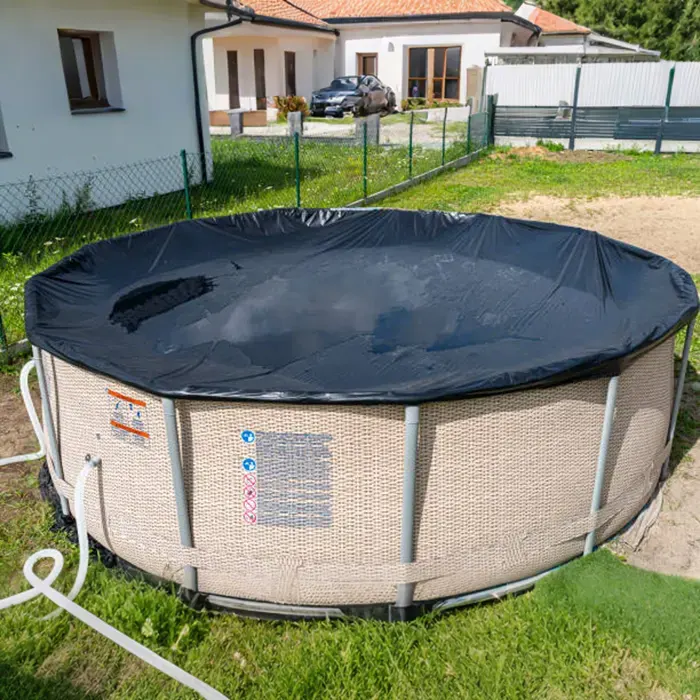PE Tarpaulin Regular Cleaning Method
2025-07-02
PE (Polyethylene) tarpaulins are durable, water-resistant sheets commonly used for various outdoor activities, including construction, agriculture, camping, and transportation. Despite their toughness and ability to withstand harsh weather conditions, regular cleaning and maintenance are essential to prolong their lifespan and ensure optimal performance. The cleaning method for PE tarpaulins is simple but requires attention to detail to avoid damage. This essay will outline the steps involved in the regular cleaning of PE tarpaulins, tips for maintaining their quality, and why it's important to keep them clean.
1. Initial Inspection
Before beginning the cleaning process, it’s important to inspect the PE tarpaulin for any visible damage, such as rips, holes, or excessive wear. If any major issues are found, consider repairing them before cleaning to prevent further damage. Minor holes can be patched with a tarpaulin repair kit.
2. Shaking and Dusting Off
The first step in cleaning a PE tarpaulin is to remove any loose dirt, leaves, or debris. Lay the tarpaulin flat or hang it up if possible. Use a soft broom, a hand brush, or simply shake the tarpaulin to dislodge any large particles. This step prevents the debris from scratching the surface when wet.
3. Washing with Water
Once the loose debris is removed, use water to rinse the tarpaulin. If you have access to a hose, gently spray the tarpaulin with cold water to remove any additional dirt or grime. Avoid using high-pressure water as this could cause damage to the fabric. If you’re cleaning a large tarpaulin, it may be helpful to use a soft cloth or sponge to wipe off dirt spots.
4. Mild Detergent Application
For deeper cleaning, mix a solution of mild detergent (such as dish soap or a specialized tarpaulin cleaner) with water. Use a soft sponge, cloth, or a gentle brush to apply the solution to the tarpaulin. Focus on any stained or soiled areas, but avoid scrubbing too harshly, as this could wear down the protective coating of the tarpaulin. Allow the soap solution to sit for a few minutes to lift dirt and grime.
5. Rinsing and Drying
After scrubbing, rinse the tarpaulin thoroughly with clean water to remove any soap residue. It's essential to make sure no detergent is left on the tarpaulin as it can cause the material to degrade over time. Lay the tarpaulin out in a well-ventilated area to dry completely. Avoid using high heat, as this can cause the material to shrink or lose its shape. Let the tarpaulin air-dry naturally in the sun, which will also help eliminate any residual moisture.

6. Regular Maintenance
To ensure the longevity of your PE tarpaulin, it’s important to clean it regularly, especially if it’s exposed to harsh elements like rain, snow, or mud. Depending on usage, aim to clean the tarpaulin every 2-3 months or more frequently if it’s heavily soiled. Regular cleaning helps maintain the tarpaulin's water-resistant properties and prevents mold and mildew growth.
7. Storage Tips
When not in use, store the tarpaulin in a dry, cool place away from direct sunlight. Prolonged exposure to UV rays can weaken the material. If possible, fold the tarpaulin neatly to avoid creases and wear, but make sure it’s not folded too tightly, which could cause permanent wrinkles.
Conclusion
PE tarpaulins are essential tools for various outdoor and industrial applications, and maintaining their cleanliness is crucial to their longevity and effectiveness. Regular cleaning, including debris removal, washing with mild detergent, rinsing, and air-drying, will help preserve the fabric’s water-resistant and durable properties. Proper storage also ensures that the tarpaulin remains in good condition when not in use. By following these simple yet effective steps, users can extend the life of their PE tarpaulin, ensuring it remains a reliable tool for years to come.
As a professional manufacturer and supplier, we provide high-quality products. If you are interested in our products or have any questions, please feel free to contact us.